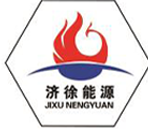
Dec . 16, 2024 14:21
Back to list
صمام التنفيس
Understanding Pressure Relief Valves A Crucial Safety Component
Pressure relief valves (PRVs) are critical components in various industries, ensuring safety and functionality in systems that handle pressurized fluids or gases. These valves serve as a preventive measure against excessive pressure build-up, which can lead to catastrophic failures, equipment damage, or even hazardous situations for personnel and the environment.
What is a Pressure Relief Valve?
A pressure relief valve is a mechanical device designed to protect a pressurized system from exceeding its maximum allowable pressure limit. When the pressure within a system rises beyond the configured set point, the PRV opens to release excess pressure. This action helps maintain the operational stability of the system and prevents potential explosions or ruptures.
PRVs are typically used in a variety of applications, including oil and gas production, chemical processing, steam systems, and water treatment plants. Given the critical nature of these applications, the design and functionality of pressure relief valves are subject to strict industry standards and regulations.
.
There are several types of pressure relief valves, each suited for specific applications and pressure management needs. The most common types include
صمام التنفيس

1. Spring-Loaded Relief Valves These are the most prevalent type of PRVs. They use a spring mechanism to hold the valve closed until a pre-defined pressure is reached. Once the pressure exceeds the set point, the spring compresses, allowing the valve to open and release the excess pressure.
2. Pilot-Operated Relief Valves These valves use a pilot mechanism to control the main valve. They are typically more sensitive and can offer better performance at higher pressures, making them ideal for larger applications where precise pressure control is necessary.
3. Bursting Discs While not a valve in the traditional sense, bursting discs act as pressure relief devices that rupture at a predetermined pressure level. They are sometimes used in conjunction with other types of PRVs to provide an additional layer of safety.
Importance of Regular Maintenance
Regular maintenance and testing of pressure relief valves are essential to ensuring their reliability and effectiveness. Over time, factors such as corrosion, sediment build-up, and wear and tear can compromise a PRV's ability to function properly. Routine inspections can help identify potential issues before they become critical, allowing for timely repairs or replacements.
Conclusion
In summary, pressure relief valves are indispensable components that play a vital role in ensuring the safety and integrity of pressurized systems across various industries. By preventing pressure build-up, they mitigate the risks associated with overpressure scenarios, protecting both personnel and equipment. Understanding the different types of PRVs, their applications, and the importance of maintenance is crucial for anyone involved in the management of pressurized systems. Investing in the right pressure relief systems and adhering to regular maintenance schedules not only complies with regulatory requirements but also fosters a culture of safety and reliability in industrial operations.
Latest news
-
Safety Valve Spring-Loaded Design Overpressure ProtectionNewsJul.25,2025
-
Precision Voltage Regulator AC5 Accuracy Grade PerformanceNewsJul.25,2025
-
Natural Gas Pressure Regulating Skid Industrial Pipeline ApplicationsNewsJul.25,2025
-
Natural Gas Filter Stainless Steel Mesh Element DesignNewsJul.25,2025
-
Gas Pressure Regulator Valve Direct-Acting Spring-Loaded DesignNewsJul.25,2025
-
Decompression Equipment Multi-Stage Heat Exchange System DesignNewsJul.25,2025

